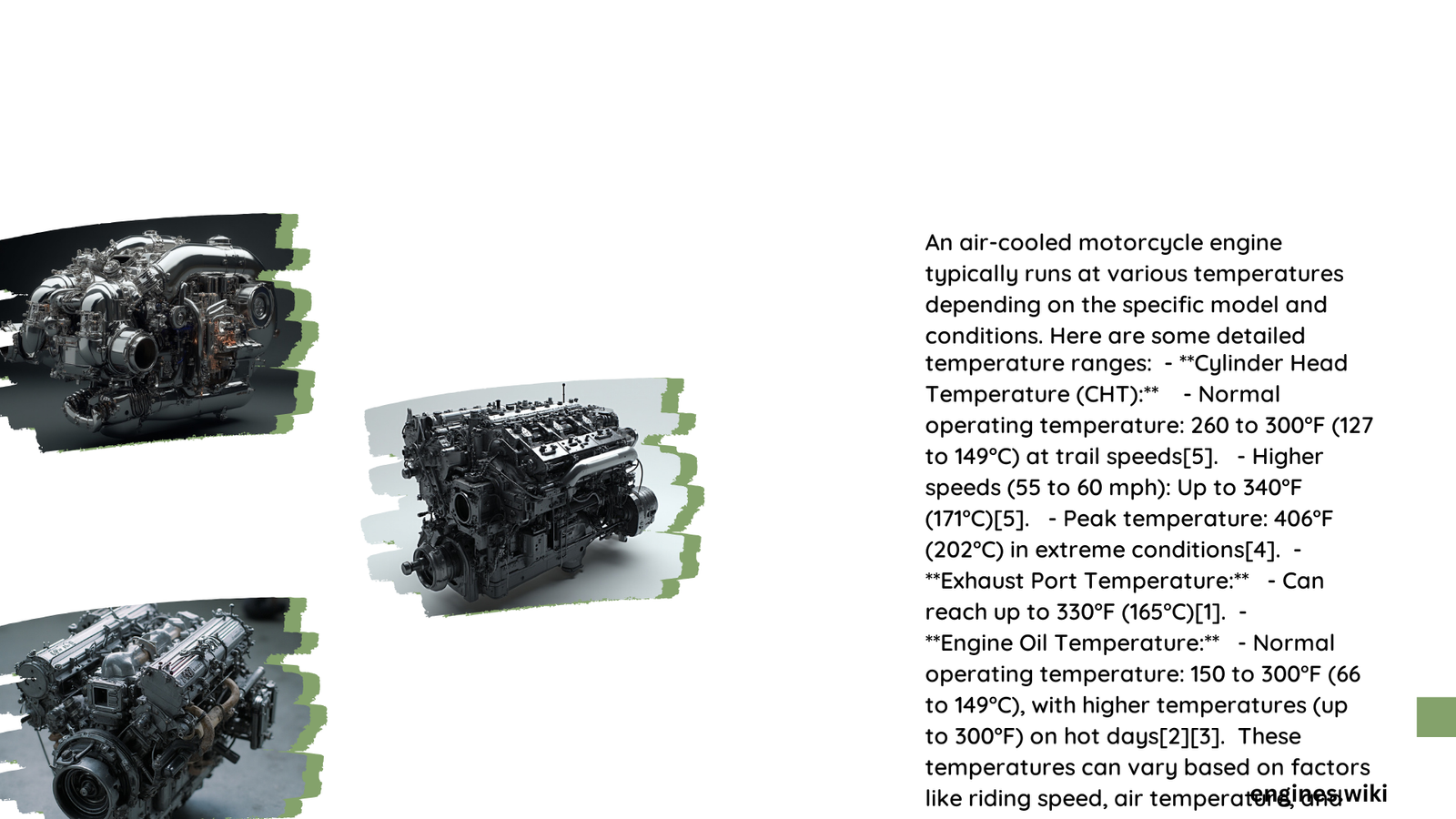Air cooled motorcycle engines operate within a critical temperature range that significantly impacts performance, efficiency, and longevity. Understanding these thermal dynamics is essential for riders seeking optimal engine health and performance, with typical operating temperatures ranging between 180°F to 220°F (82°C to 104°C), influenced by multiple mechanical and environmental factors.
What Are the Typical Operating Temperatures for Air Cooled Motorcycle Engines?
Core Temperature Ranges
Air cooled motorcycle engines experience temperature variations based on several critical factors:
| Temperature Zone | Range | Performance Impact |
|---|---|---|
| Optimal Operating | 180°F – 220°F | Peak Engine Efficiency |
| Cylinder Head | 200°F – 220°F | Normal Thermal Performance |
| Maximum Safe | 250°F | Performance Threshold |
What Factors Influence Engine Temperature?
Key elements affecting air cooled motorcycle engine temperatures include:
- Ambient Environmental Conditions
- External temperature
- Humidity levels
-
Altitude
-
Mechanical Design Considerations
- Engine fin configuration
- Airflow dynamics
-
Material heat conductivity
-
Riding Characteristics
- Speed variations
- Load conditions
- Continuous versus intermittent riding
How Do Different Motorcycle Types Experience Temperature Variations?
Sport Motorcycles
- Higher performance engines
- More aggressive thermal management
- Typically run at upper temperature ranges (210°F – 220°F)
Cruiser Motorcycles
- More relaxed engine designs
- Lower thermal stress
- Generally operate in mid-range temperatures (190°F – 210°F)
What Are Critical Overheating Warning Signs?
Riders should monitor these potential overheating indicators:
- Unexpected power reduction
- Unusual engine knocking sounds
- Visible steam or excessive smoke
- Metallic burning odors
- Rapid temperature gauge fluctuations
Technical Insights: Heat Dissipation Mechanisms
Air cooled engines rely primarily on:
– Extensive surface area through engine fins
– Natural convection cooling
– Airflow generated during motorcycle movement
Precision Measurement Techniques
Recommended monitoring tools:
– Infrared temperature guns
– Integrated temperature sensors
– External thermal imaging cameras
Maintenance Strategies for Optimal Temperature Control
- Regular fin cleaning
- Proper oil level maintenance
- Avoiding prolonged idling
- Periodic comprehensive engine inspections
- Using high-quality synthetic lubricants
Advanced Thermal Management Recommendations
- Install additional cooling fins
- Use thermal ceramic coatings
- Implement advanced lubricant technologies
- Consider aftermarket cooling enhancements
Conclusion

Understanding and managing air cooled motorcycle engine temperatures requires a holistic approach combining mechanical knowledge, proactive maintenance, and situational awareness.
